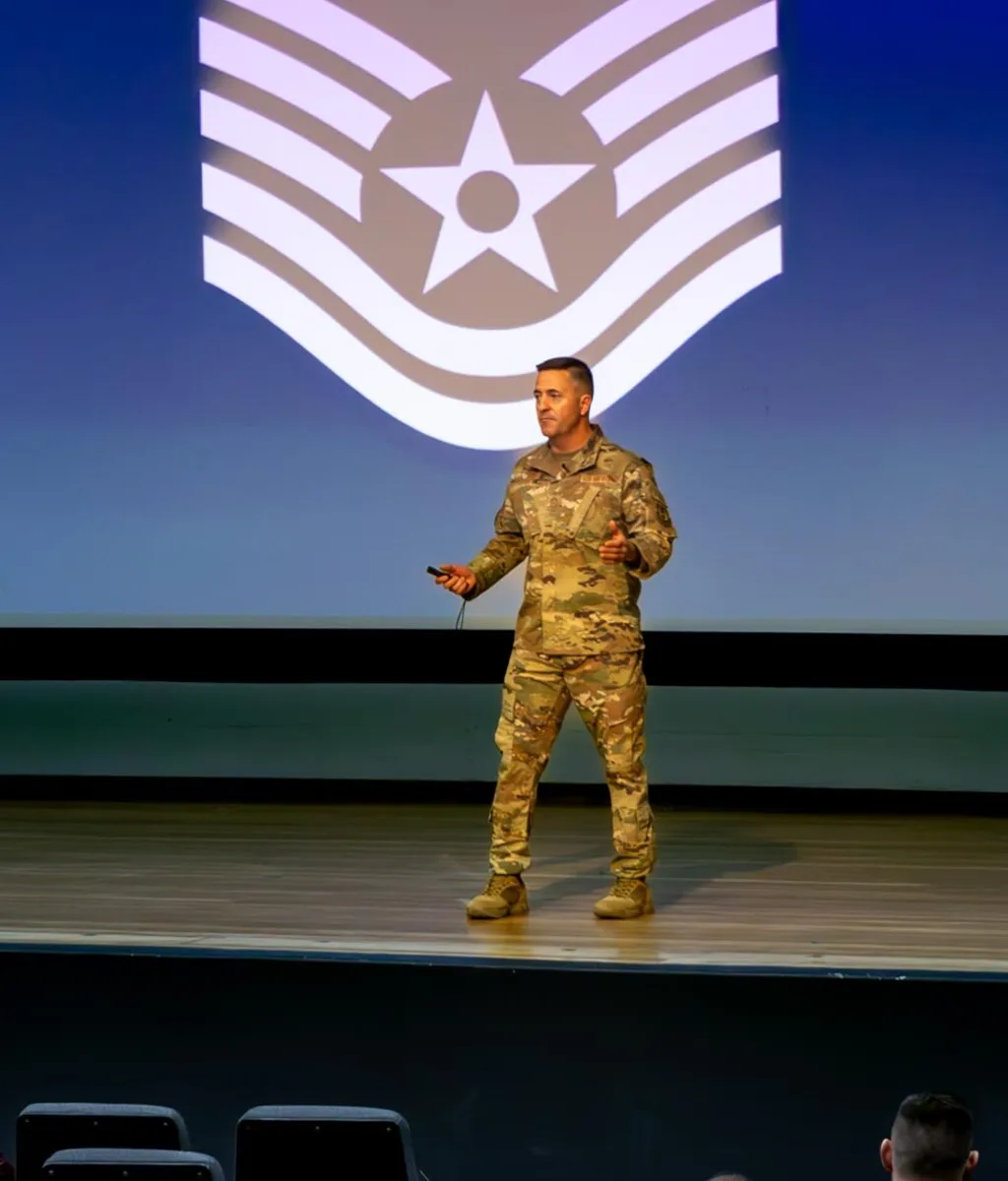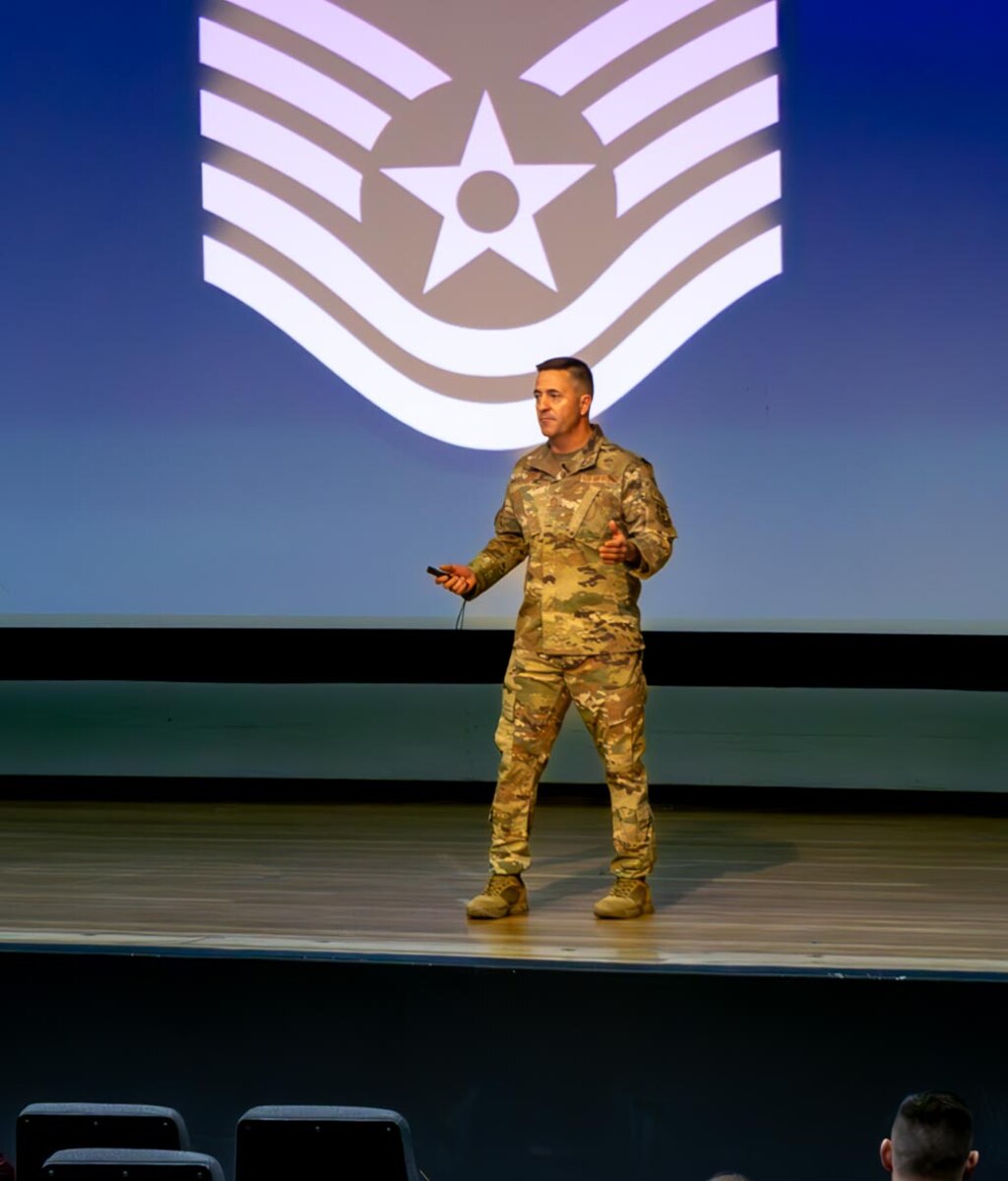Mike Paoli
Comprehensive Airman Fitness plus attitude, unit culture and teamwork equals full-spectrum risk management. That’s the message Chief Master Sgt. Justin Stoltzfus, 412th Test Wing command chief master sergeant, delivered during the wing’s recent Back-in-the-Saddle Day (click here to watch).
The fitness model is comprised of mental, physical, social and spiritual health pillars that equally support overall Airman and family wellness and resiliency. The model is used Air Force-wide to encourage a balance between different aspects of life including work, relationships and personal well-being. Stoltzfus leveraged it, along with his own risk management principles, to emphasize the necessity of a strong safety culture for maintaining warfighting readiness.
The cost to the Air Force and family, friends and co-workers during 2024 of failing to balance this seemingly simple yet complex equation was 47 Airmen and $1.2 billion in assets, all lost through preventable accidents, according to Stoltzfus. “Our total force Airmen are the Air Force’s most important asset,” he said, underscoring the human cost and echoing a key talking point from Air Force chief of staff Gen. David Allvin and 412th Test Wing commander Brig. Gen. Doug Wickert.
“The boss talked about what China is doing right now, said Stoltzfus. “I will tell you, in the profession of arms, what you do each and every day is inherently dangerous, and we can’t lose any more of you. So we need you to be healthy, we need you to be mentally strong, socially strong and spiritually strong so you can go out and make good decisions.
“I don’t think people go out and say, ‘Hey I’m gonna make a bad decision today and it’s gonna cause an accident,’” he said. “But that’s what can happen when individuals don’t have those pillars balanced in their life.”

The Air Force Comprehensive Airman Fitness model
The most important pillar for making educated risk decisions is mental health, according to the chief, who has observed the tragic impacts of mental fatigue, burnout and other aspects of diminished mental strength during his 28 years of active duty.
“Yet it all ties into itself,” he said. “Your performance goes up if you’re healthy, if you’ve got your rest. If you’re thinking straight, safety is enhanced. So you need to take care of yourself first before you can take care of the team.”
The chief challenged wing members to strengthen the second half of the equation, his core risk management principles of individual attitude, workplace culture and working as a team.
“A great attitude is one of your best safety tools,” he said. “If you go out there with ‘This is the way we’ve always done it,’ and you start believing that … this is when accidents happen. And we’re all part of that, and we all see it. Are we saying anything about it? Are we stopping it?
“I will tell you that there were some situations that we got ourselves into in the Middle East that if we wouldn’t have taken time to think through what we were about to do, it could’ve ended up very poorly for all of us. But fortunately, we had a culture of taking care of each other and thinking through risk management steps in daily operations.”
Risk management is technically a five-step process identified by the Air Force as identifying hazards; assessing hazards; developing controls and making decisions; implementing controls; and supervising and evaluating. But it can be simplified, according to the chief, to five “very simplistic” questions.
“Before you go do something, simply ask, ‘What can go wrong,?’ What are the consequences?, How can it happen?, How likely are they to happen?, and How can we mitigate them?’”
He further encouraged audience members to apply those questions to off-duty activity, including management of finances, relationships and other sources of stress.
Addressing culture, he asked members if their units demonstrated sensible, risk-informed decision making, disciplined operations and adherence to basic standards. He called out Senior Master Sgt. Tanya Sipos, 412th Force Support Squadron, to tell the rest of the audience why getting “those basics” right is important. Sipos responded, “To set the foundation, chief,” which met with lively words of approval.
“I’m a [civil engineer] guy,” Stoltfuz said, “so we know how important it is to get the foundation right. If your foundation is cracked and fractured, when you go to put those walls and roof on, it’s not going to survive the storm, and we need each and every one of you to be able to survive the storm that’s coming."
Addressing teamwork, Stoltzfus challenged members to work together to incorporate risk management into daily operations, and to eliminate drift by stringently following established procedures and instructions.
He ended the day’s session with a call to action. “Take care of yourself, act like Airmen, and always be ready, because I’ll tell ya, our adversaries are getting ready, and we need to have that same mindset.”



